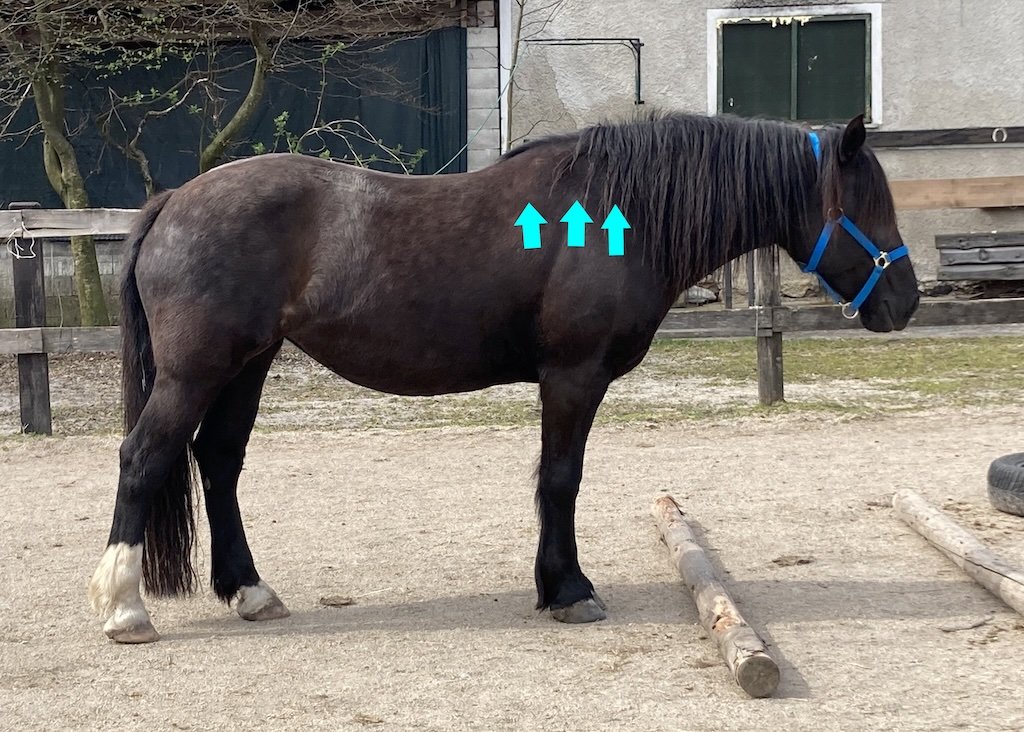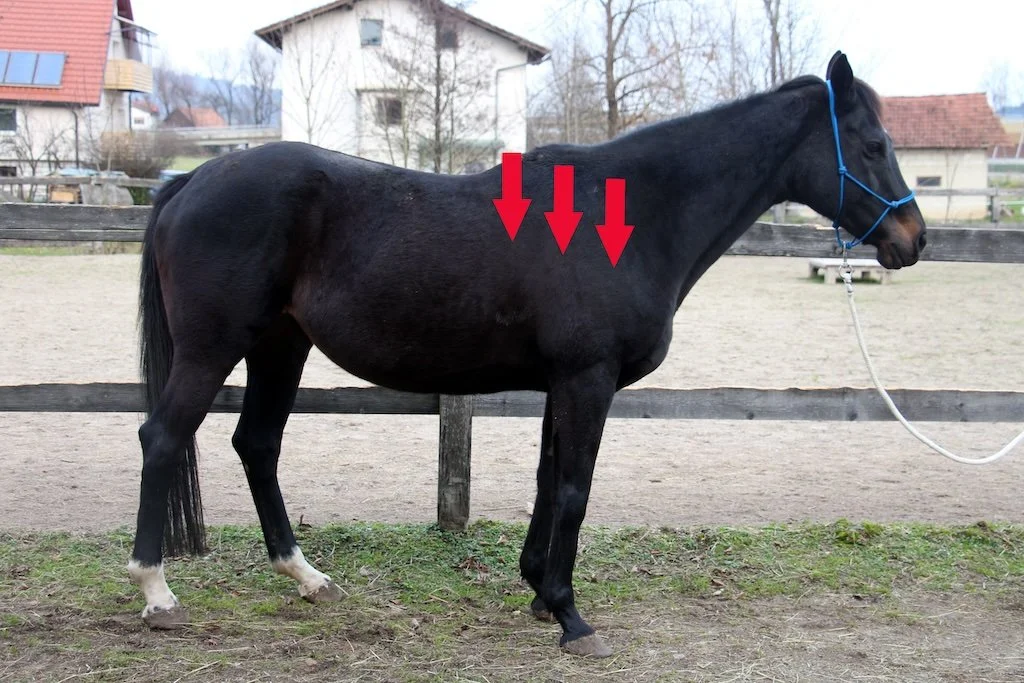The neutral spine and range of movement
A neutral spine enables the horse to move with ease and suppleness and allows him to use his body in an energy efficient way.
A neutral spine is supported by a strong thoracic sling.
Let's talk about what it means for a horse to have a neutral spine and why it matters. A neutral spine position is something we talk about when talking about the horse's posture. It has to do with how the spine is positioned when the horse is at rest. When any joint is in its neutral position, it means it is positioned in its midrange, where it needs the least support from muscles and connective tissue. Thus, a neutral joint means less muscular effort.
For example, if we keep our neck in a neutral position, with the head stacked right on top of our spine, there is very little strain on the soft tissues surrounding the neck. However, if we hold our head too forward, so out neck is out of its neutral position, the muscles around the neck have to work harder, even when we are at rest, to maintain this out-of-neutral position. In time, this overburdens the soft tissues and damages the joints.
Another reason why we want a neutral spine in our horses is that the small stabilizing muscles surrounding each vertebrae, function best when the joints are in their midrange position. Thus, a neutral spine is more protected from overbending and overstraining the joints while executing big, powerful movements. The position of the vertebrae will also dictate the range of motion in the spine. When the joints are in neutral, the spine will have available a powerful array of different movements. The horse will be able to move in all directions and use his spine to support his movements. However, if the spine is not neutral, but locked toward extension (as it most often is), the range of motion will be limited. There will be more effort needed for movement and the lightness will be gone. Every move will require more effort and during every move the spine will be less protected, because the stabilizing muscles are not in their optimal work range. Therefore, the chance of injury increases.
A spine stuck in extension is most often accompanied by a weak thoracic sling.
As mentioned, a lot of horses tend to have their spines locked toward extension. This usually happens when the base of the neck (the junction between the neck and thoracic vertebrae), is pushed down. The orientation of the spine becomes steeper, moving away from neutral, robbing the horse of his full range of motion. Why does the base of the neck get pushed down? There are many reasons for this, ranging from poll tightness, to bad riding to poor hoof-care, but what they all have in common is a weak thoracic sling. In order to achieve a neutral spine, we need to first address factors that might be preventing the horse from using these muscles correctly and then start training the thoracic sling. This can be a long process, but it is an investment in your horse's health well worth making.

